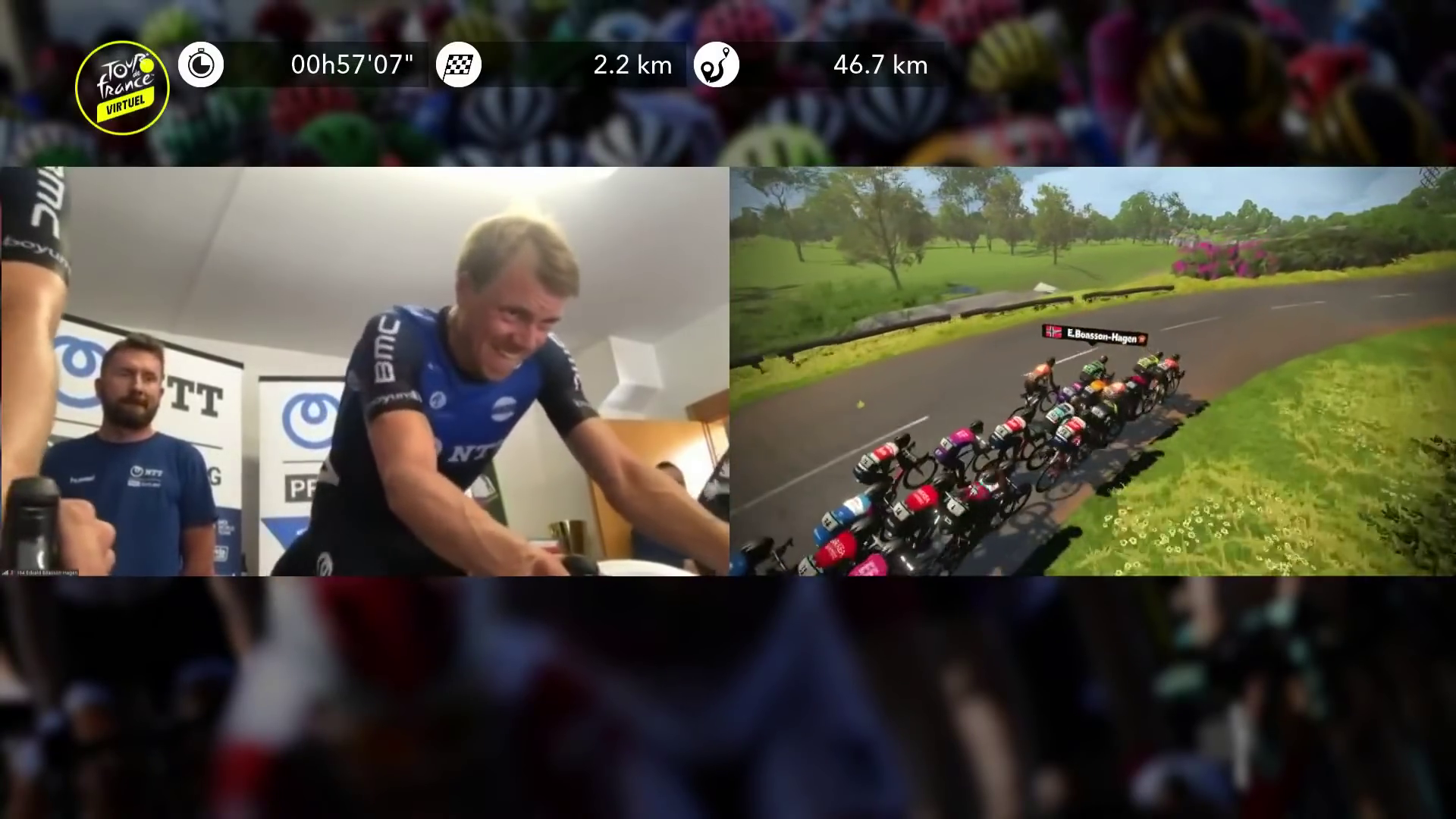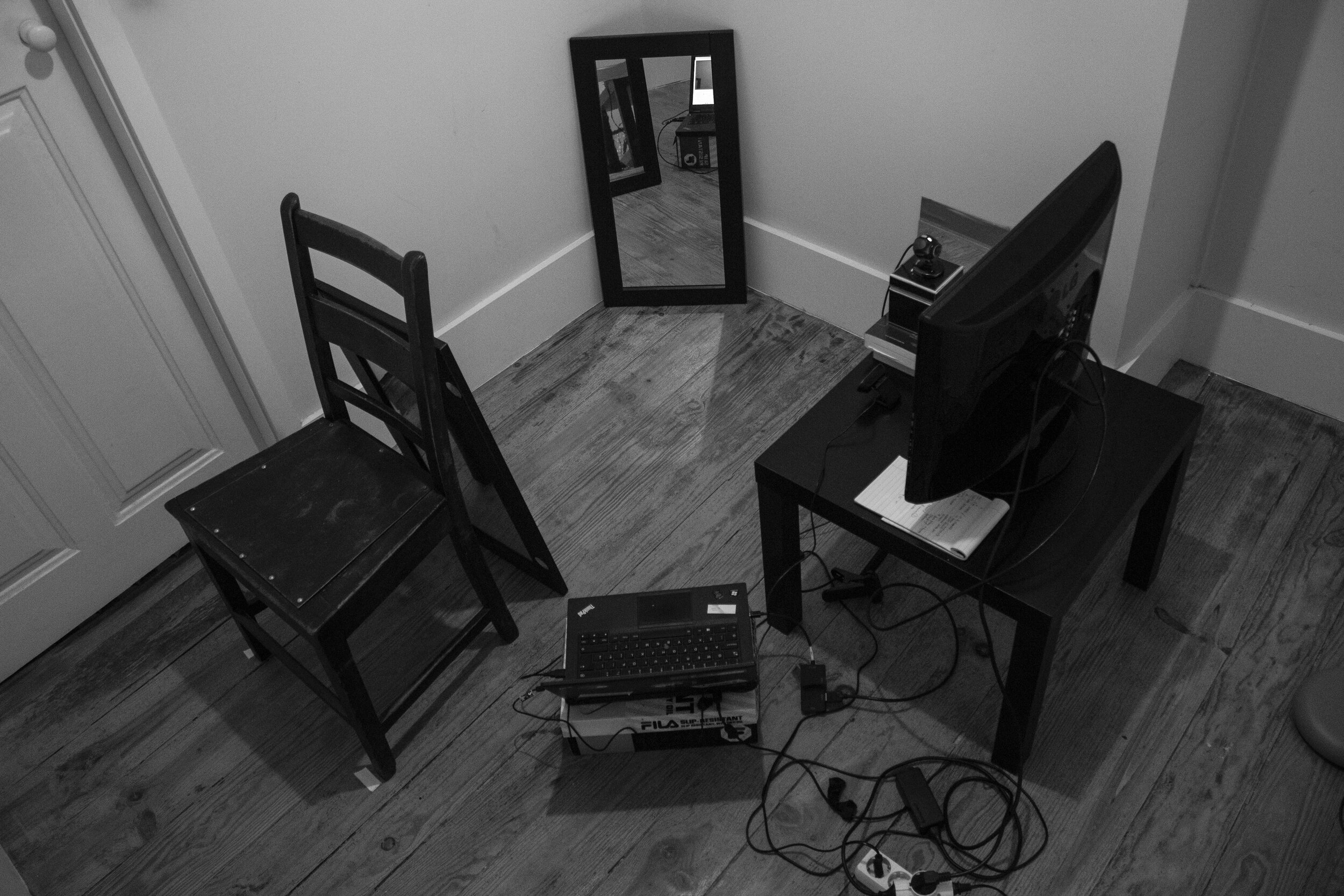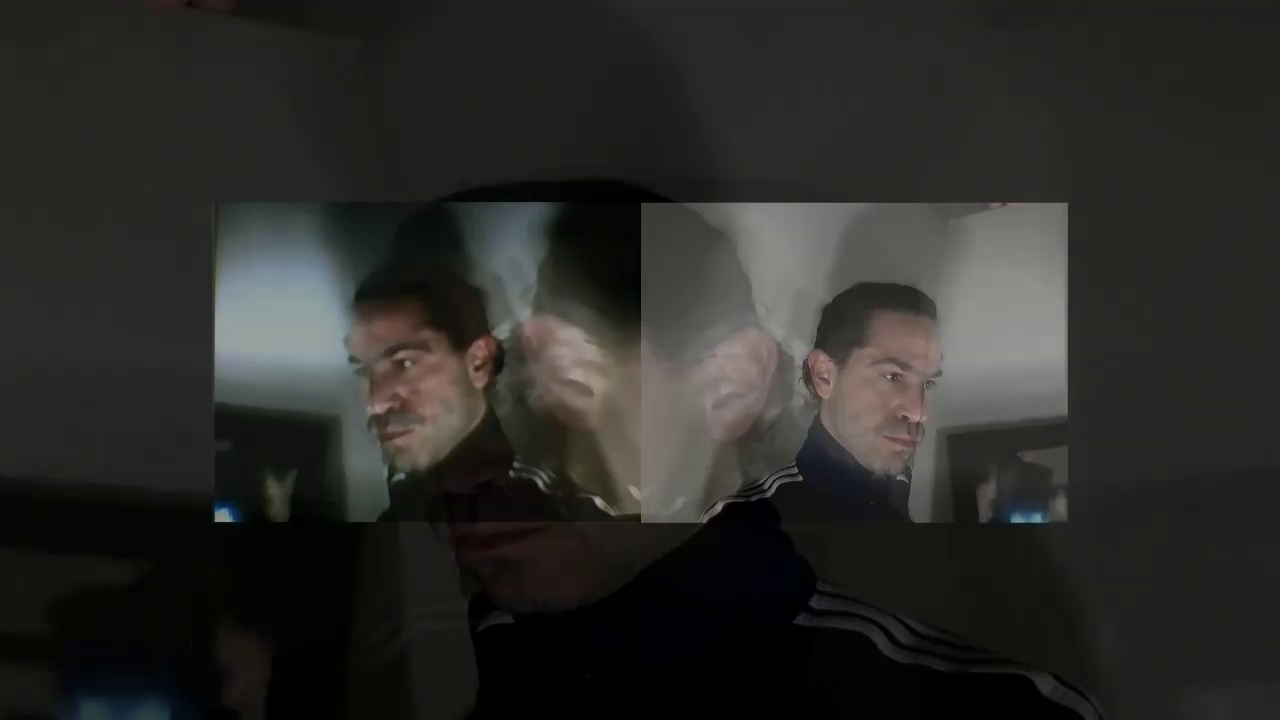In 2020, 'Online' Went Viral, But We Had Been Here… All This Time!
Screenshot from rehearsal for Pandemic Encounters ::: being [ together] in the deep third space - Networked Performance Installation in collaboration with Paul Sermon, Gregory Kuhn and action artists. Global Laser / Third Space Network (May 2020)
If you are reading this, you are probably connected to the Internet. If the two of us were to connect to each other in real time, through a video conferencing platform, we could engage in direct collaboration if we wanted to. We could interact with each other at a distance, collaborating regardless of where we are geographically. The environment we’d be immersed in would be operated within a network – a networked environment. One could consider smoke signals to be part of a long tradition of communicating at a distance. But this long-distance communication practice has been enhanced with the introduction of telecommunication technologies: radio, telephone, satellite, microwave, data communication, and finally, computer networking.
These technologies introduced shifts in society as each was absorbed into usage. They became commodities, held different possibilities, utilized different models. And at some point, the power of computer networking effectively combined all those different aspects of communication technologies into one complex communicative system: the Internet. This space became an essential part of all communication, where users’ interactions shaped the continuous flow of information. Through various types of interaction, collaboration at a distance becomes possible. Artists like me engage in a creative practice that uses this system to unveil its implications – a practice that brings into evidence a narrative of being together while apart.
Rehearsals for Verbally Challenged: Digital Dialogues - Networked Performance Contact Theater (Manchester, UK) and CultureHub (New York, US) (December 2011)
As an early millennial living at the dawn of the social media era, some glimpses of the Internet being used in the performing arts were mere references and very distant to me. To me, the Internet existed as a tool to make communication flow more easily and to make research more accessible. As someone with a background in theater, I understood the performing arts to be set on a stage or other non-common physical places. The idea of using the Internet to engage in collective creation of performance was very foreign to me. How? I could not even start to think about it.
In 2008, I started exploring video as a tool for performative actions. Instead of producing work for a live context, I recorded and edited videos that resulted in art pieces. With this practice, I came across CultureHub’s submission call for Mediated Motion, a movement and technology exhibition to be presented as a part of the 2011 La MaMa Moves! dance festival. I was intrigued by the organization and what they were developing, and I managed to join CultureHub as a Resident Artist.
After a few weeks in New York, mid-September 2011, a portal of sorts opened in front of my eyes. On the 3rd floor studio of 47 Great Jones Street, a white wall became a window to (an)other space in the world. CultureHub’s videoconferencing system allowed us to establish a stable connection with remote locations, which were beamed onto the white wall. Places such as Seoul, KR and Manchester, UK, amongst others, would take turns on this wall. Within this system, audiences, students, and artists were able to connect. Rehearsals and classes, digital dialogues, and improvised audiovisual meditations all took place on screen through an array of steps that allowed remote locations to connect at a distance. It was fascinating and intriguing to witness. Being involved in these processes, not quite knowing what I was doing, made me curious about the etymology of the word for this genre:
TELE + PRESENCE
Works developed in this format began in the 80s and are associated with the term ‘telepresence’, which evolved into ‘telepresence art’. This phrase includes any work that uses telecommunication technologies to put distant and remote locations into active dialogue, whether by allowing performers and/or audiences to interact, or just by enabling remote action to take place. Telepresence art allows for a shared sense of presence and space.
While witnessing projects at CultureHub and trying to understand more about this genre, I started to discover artists who took the liberty of exploring telecommunication technologies to their fullest extent. Hole in Space (1980), later described as a Public Communication Sculpture, was one of the first experiments in this field. Artists Kit Galloway and Sherrie Rabinowitz succeeded in bringing together audiences in New York and Los Angeles by projecting large scale, real time video-chats onto the sides of buildings in both locations. It surprised passers-by in each city who would become mesmerized with what was happening and being able to see and speak at the distance of the two opposite coasts. I was surprised to learn that a seminal project framing this kind of artistic practice was set using satellite communication. More than just a singular and innovative achievement, it was part of a broader vision led by the artists, who were experimenting with technology systems to create borderless spaces to foster cultural exchange (e.g. Electronic Cafe International). These projects centered on a shared vision: the idea of fostering exchange beyond physical limitations and producing unique sensations from (im)possible connections. I wanted to experiment with this kind of art form as a means of understanding what lays beyond the connection. For action to take place, a system has to be running, and what better way to understand that system than to imitate those who came before us and see what happens?
Still from Tele-Propinquity Party, held at CultureHub in New York, inviting people to connect from remote locations (February 2012)
During and after my residency at CultureHub, an endless universe of references and writings followed. I read about artists and projects that demonstrated a continuous use of technologies in alternative ways, invariably at the dawn of social transformations caused by their integration. The technologies in practice disclosed unknown possibilities beyond their purposes of use. Learning about all the different approaches towards a re-thinking of the world. Throughout my research, I found definitions that helped me understand better this system of communication powering a creative force.
"[Telepresence art] is a means for questioning the unidirectional communication structures that mark both high art (painting, sculpture) and mass media (television, radio). A way to produce an open and engaging experience that manifests the cultural changes brought about by remote control, remote vision, telekinesis, and real-time exchange of audiovisual information. Thus, creating a unique context in which participants are invited to experience invented remote worlds from perspectives and scales different than human." – Eduardo Kac 1
Such findings made me realize that telecommunication technologies in artistic practice, used as communicative systems, hold the potential to effect change when activated within a cultural and artistic lens. Artist Nam June Paik, for example, used technological tools to comment on media and open new paths for different results. Paik saw that mediums like television were only being used in one direction, without the possibility of two-way communication. By challenging this dynamic, Paik was able to activate technology in a responsive way, adding to its meaning. Using technology to its full extent provides information on how it shapes the world. So, in the case of telepresence art, we must go beyond the primary possibility of remote collaboration/networked environments to be able to reflect on the transformation this system has yielded.
Unquantifiably Infinite [Unknown] Unknowns a collaboration between CultureHub (New York, US) and FuturePlaces (Porto, Portugal) for Ideas City - New Museum (May 2013)
Before the 21st century, telepresence art was a quiet space for investigation, a niche of its own. And while it is true that the pandemic has made 'online' go viral, normalizing these practices, it is important to continue activating this space and its components in alternative ways. Creating new realities which extend the human possibilities through connection, to continue to contribute to the Communications Revolution. As media arts theorist Gene Youngblood argues, “A communications revolution isn't about technology; it's about possible relations among people.” 2 Artists play a crucial role in using technologies to address the transformation they have caused. It is an exercise of constant improvisation.
After my residency, both CultureHub and I continued to improvise along this path. We spent a decade exploring borderless spaces to foster cultural and social exchange across networks and distance, producing results in the undefined space of the digital. The 'dispositif' is part of the thinking process, implied in the meaning. It constitutes a dimension that, in the words of Roy Ascott (regarding telematic art), amplifies the mind and the body into “unpredictable configurations of thought and creativity.” 3 The technological tools don’t come to us as gifts for a better understanding of who we are. The mainstream has them available to amplify our need for consumption, but are falsely advertised as coping mechanisms: illusory alternatives, or, pure entertainment, as we have witnessed during this pandemic. Communication technologies continue to permeate a mass consumption commodified lifestyle: an online simulation of the Tour de France, where cyclists road from their houses; a fake-live VMA’s ceremony combining green screen acceptance speeches and performances for pre-recorded applauses, et cetera. Considering the specificity of the networked environments in creative practice can help us understand how the global narrative is being shaped.
Screenshot of Virtual Tour de France - Stage 3 broadcasted over the Internet (July, 2020)
The novelty of networked environments is not new anymore. The ‘virtual’ is virtually anything we are in connection with nowadays. Humanity has been left to their own devices without the conscious understanding that the illusory dissipation of time and space is not a reality in itself. The public realm, including all of our digital interactions, is a timeless experience of the social body without the presence of other bodies. All of this articulates the personal artistic practice of the computer screen and the networked space as a process of understanding the narrative in which we are included.
Ten years after my residency at CultureHub, I remain in an ongoing investigation of the specificities of technology and/or connection, letting the ‘constraints’ shape the results. The immateriality of the digital, when activated, transforms into artifacts. Its activation translates into an object which carries meaning. The same way we articulate a thought into words so that it becomes tangible. As artists and technologists, we invent actions and environments which are loose enough to be able to deal with the unknown unknowns we want to find when practicing unusual spaces of communication. These processes are, for me, transversal to any kind of artistic work that relies on telepresence to produce an object/performance/installation. Dealing with the innovations of a highly technological world translates into volatile expressions that will become pertinent to media archaeology studies. Methodologies that push the boundaries of an electronic system within a participatory network can render visible how the narrative is also shaping us.
The question of “How?” throughout the years transformed into various projects, and I continue to follow the exercises at CultureHub. It has become important to acknowledge that the setting up — the wiring, the machines, the connection, peripheral software — all modulates the experience. As such, it is important to show the mechanisms behind producing simulations. The materials become part of the signs included in the art-making; their intersection and interaction with us humans is part of the larger significance. When technological tools are used as mere resources, they continue to be part of an alienation process that fuels a practice of pure consumption. Understanding technologies as artistic and quotidian mediums is indeed a matter of how to make use of them in ways that can subvert their institutionalization throughout and within the system.
Images from setup and rehearsal for Duplexity State in collaboration with Sarah Weaver - Networked Performance performed live at Experimental Intermedia Foundation, in New York, US (March 2020)
The results of these experiments will most often fall in a place of hybridity. Due to the continuous transformation and multiplying options of technology, its categorization can be difficult and unpredictable. In a decade of work at CultureHub, we can see a state of the art that is in constant debate. This work convenes several art practices and genres and intersects them with the continuous proliferation of technologies. It constitutes a valuable compendium of experiments that are almost time capsules, capturing where technology and humankind were at that specific moment. These intricate processes of making culminate in fragments of a future untold. Each time a project is developed, an undefined space for creation is activated.
If we were to do an exercise of abstraction to try and describe this space, I would suggest that we are moving in a dark space where things become visible only when we look at them or walk towards them. We are leaving darkness surrounding our presence while looking for other signs of presence. Every time different presences cross paths, a space is created for communication to happen, and as in any other communication process, the conclusion will be influenced by the nature of the environment in which it happens. Whether that intersection is made between humans through a network, or just between human and machine, its result helps us understand how the communication is happening and where it is going.
What happens in that intersection is almost impossible to predict. But while a system is running, its limitations are yet to be found. This is a movement through uncertainty and failure that enables speculations on alternative futures. A movement that will continue to inform, in isolated fragments, the practice of networked environments. A practice that has proven to hold the potential to bring minds together and generate territories of enlightenment against mass fragmentation. The underlying condition of a telematic work is one of bridging connections across distance, and as such, it represents a step closer to acknowledging that a network is made up of everyone within it. At any given moment, when a connection is made, different small worlds collide, and the product of that will ripple into the following world, and so on.
So, we continue to be here—before, during and after—experiencing the world at large, risking to inhabit these undefined spaces.
In the darkness,
We move forward,
in an unknown territory,
a territory devoid of references,
without meaning.
As we move ahead,
as we go through the surface,
through the edges,
as we follow the contours,
we intersect shapes and elements.
In that space,
it becomes…
impossible to perceive what we intersect.
We resort to memory,
to reproduce what we think
we are in fact intersecting.
We resort to memory,
of things we already know,
so we can name the things,
and make that space,
somehow recognizable.
In that space,
where distance is impossible to measure,
we try…
that opacity becomes lesser…
where are you when you’re not here?!
Daniel Pinheiro for Placelessness (2015) (Land Project – Network Collaboration Project with Lisa Parra for moving together at a distance.)
1 Telepresence Art: Cyberspace, Virtual Reality and Telepresence, Eduardo Kac / Teleskulptur, Richard Kriesche, Editor (Graz, Austria: Kulturdata, 1993), pp. 48–72.
2 Virtual Space: The Electronic Environments of Mobile Image, Gene Youngblood / International Synergy Journal #1 (Electronic Cafe International, 1986)
3 Is There Love in the Telematic Embrace?, Roy Ascott / Art Journal. New York: College Arts Association of America. 49:3. pp. 241–7 (1990)
Daniel Pinheiro explores the concept of Telematic Art by using video as a tool and the internet as a platform and is a CultureHub Resident Contributing Writer (2020–2021). Read more about his work.
![Screenshot from rehearsal for Pandemic Encounters ::: being [ together] in the deep third space - Networked Performance Installation in collaboration with Paul Sermon, Gregory Kuhn and action artists. Global Laser / Third Space Network (May 2020) ](https://images.squarespace-cdn.com/content/v1/5b2bb6b44611a0340651820a/1620947294256-8NNIGNC65UAU6ZHH6JTW/00_pandemic+encounters_may2020.jpg)
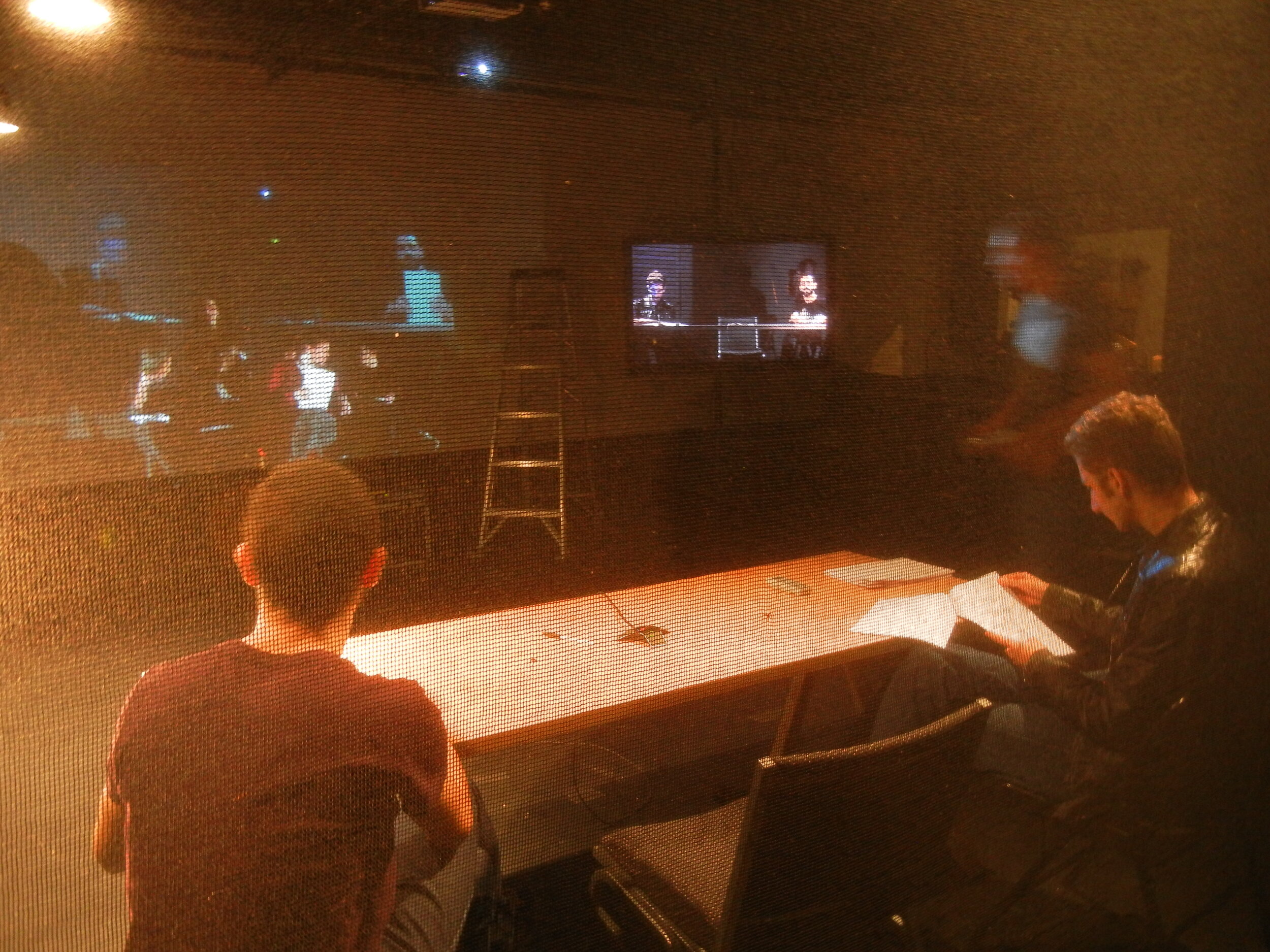
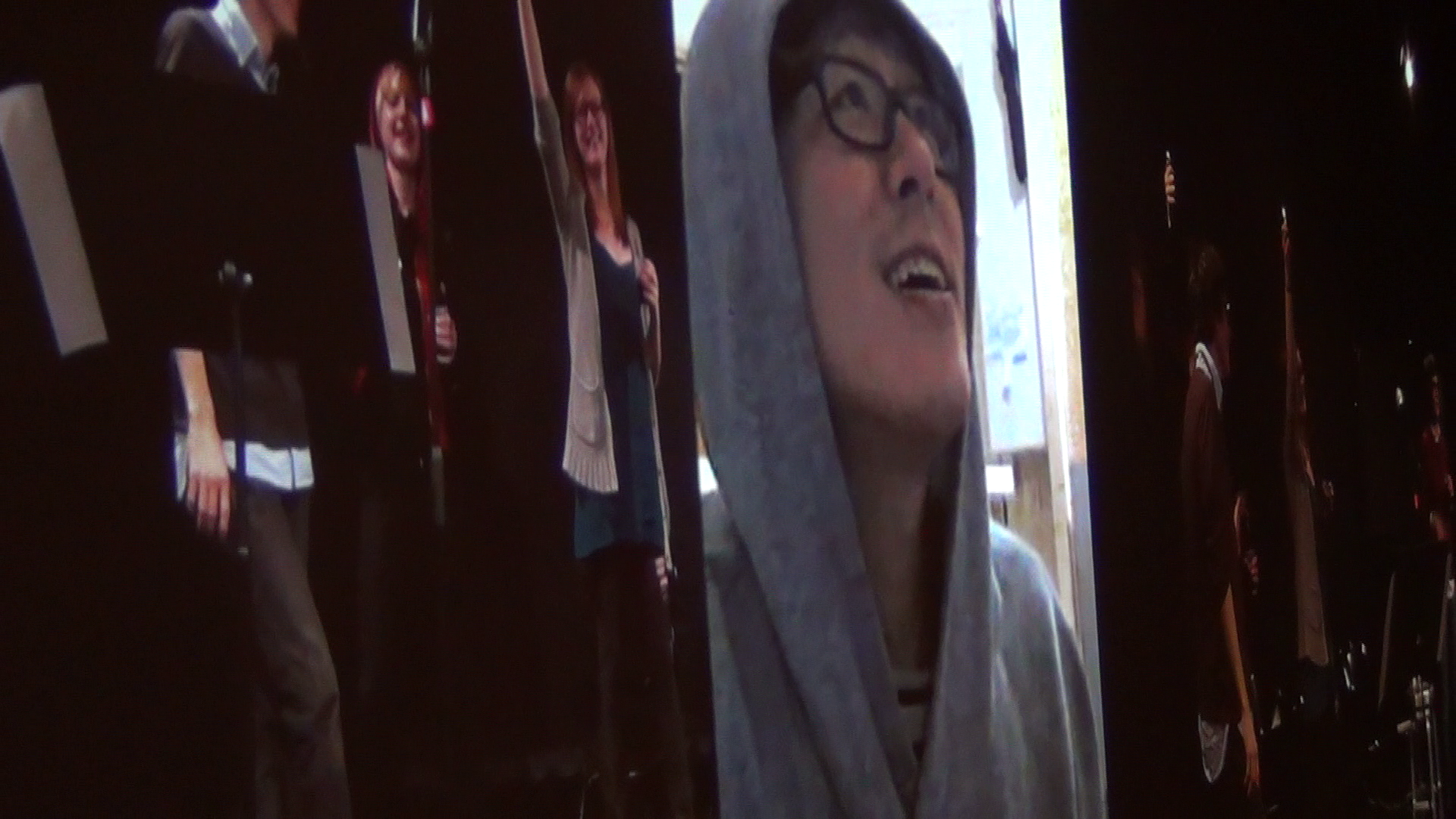
![Unquantifiably Infinite [Unknown] Unknowns a collaboration between CultureHub (New York, US) and FuturePlaces (Porto, Portugal) for Ideas City - New Museum (May 2013)](https://images.squarespace-cdn.com/content/v1/5b2bb6b44611a0340651820a/1620947703715-IF39391UZGS7OOD38YUM/03_unquantifiably+infinite+uu_may+2013.JPG)
